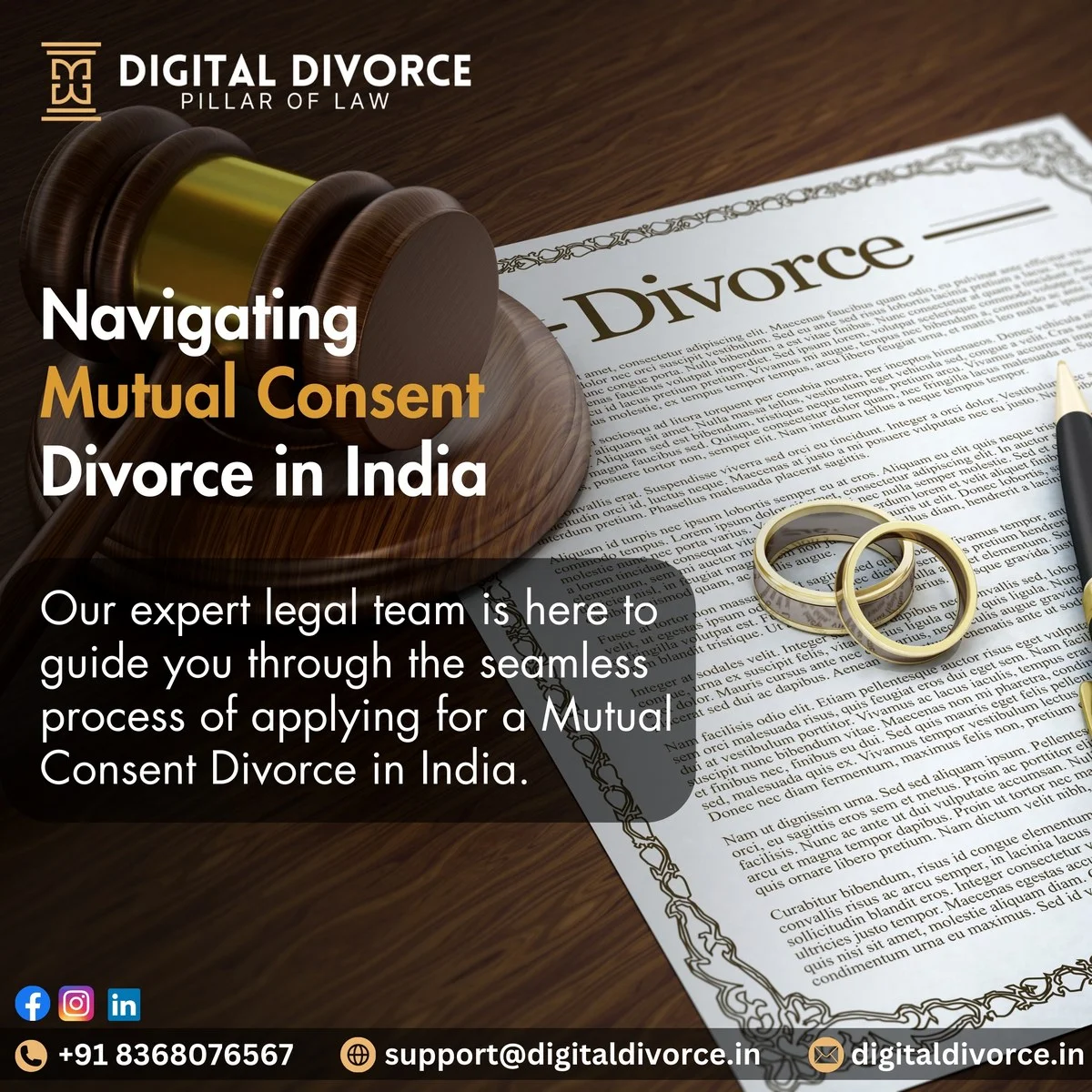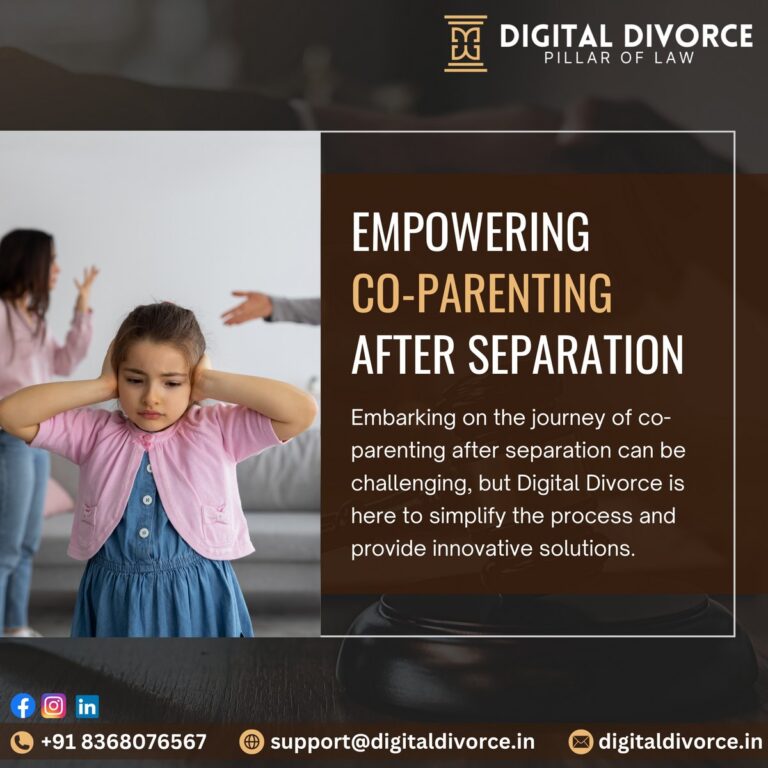Divorce, while often a necessary step, can be an emotionally charged and legally complex experience in India. However, for couples seeking an amicable separation, mutual consent divorce offers a dignified and streamlined path forward. Know the key aspects of mutual consent divorce in India, outlining the steps involved, recent legal developments, and exploring how navigating this process can be simplified and expedited with the help of DigitalDivorce.in.
Understanding Mutual Consent Divorce
Mutual consent divorce, also known as contested divorce, provides a framework for couples to dissolve their marriage with mutual agreement. This option is ideal for couples who have reached a consensus on all aspects of their separation, including:
- Division of Assets: A fair and transparent agreement outlining the distribution of marital property (land, house), investments (stocks, bonds), bank accounts, vehicles, and even debts.
- Spousal Support: If applicable, an arrangement for financial support from one spouse to the other, with details on the amount and duration.
- Child Custody and Support: For couples with children, a comprehensive plan for child custody, visitation rights, and financial support for the child’s well-being.
The Mutual Consent Divorce Process: Steps Involved
While seemingly straightforward, a successful mutual consent divorce requires careful planning and adherence to specific legal procedures. Here’s a breakdown of the key steps involved:
One-Year Separation (Subject to Change):
Traditionally, a one-year separation period has been a mandatory requirement for a mutual consent divorce under the Hindu Marriage Act, 1955. However, a recent Supreme Court ruling offers flexibility. The court recognized that the separation period can be waived at the court’s discretion, potentially accelerating the divorce process for couples seeking an amicable separation. It’s advisable to consult with a lawyer to understand the applicability of the separation period in your specific case.
Filing a Joint Petition:
The journey towards a mutual consent divorce begins with filing a joint petition with the court. This petition, signed by both spouses, expresses their mutual consent to divorce and outlines the agreed-upon terms for asset division, child custody, and spousal support (if applicable). Consulting with a lawyer before filing the petition is highly recommended to ensure the agreement is fair, balanced, and legally sound.
First Appearance in Court:
Following the filing of the joint petition, a court date will be scheduled for the first appearance. Both spouses are typically required to attend this hearing. During this time, the judge will review the petition and ensure that both parties understand and voluntarily agree to the terms of the divorce.
Recording of Statements:
The court will record statements from both spouses, confirming their consent to the divorce and their understanding of the agreed-upon terms.
The Cooling-Off Period (Six Months):
In a move to promote reconciliation, the court often mandates a six-month “cooling-off” period after the first appearance. This period allows the couple time to reconsider their decision and attempt reconciliation. However, if both spouses remain committed to the divorce after the cooling-off period, the process moves forward.
Second Appearance and Final Decree:
After the cooling-off period, a second court appearance is scheduled. If both spouses reaffirm their desire for divorce, the court may grant a final decree of divorce, officially dissolving the marriage.
Recent Developments in Mutual Consent Divorce
The legal landscape surrounding divorce in India is constantly evolving. Here are some recent developments that may impact your mutual consent divorce:
- Waiver of Mandatory Separation Period: As mentioned earlier, the Supreme Court’s recent ruling empowers courts to waive the one-year separation period under certain circumstances.
- Focus on Reconciliation: The judiciary continues to emphasize reconciliation efforts. Courts may recommend mediation or counseling during the cooling-off period.
- Focus on Transparency: Open communication and transparent disclosure of financial information are crucial throughout the process.
Simplify and Streamline Your Divorce Journey With DigitalDivorce.in
While the steps outlined above may seem straightforward, navigating the legalities and managing paperwork associated with a mutual consent divorce can be overwhelming. DigitalDivorce.in steps in as your trusted partner, offering a comprehensive platform and a team of experienced professionals to simplify and potentially expedite your journey.
Here’s how DigitalDivorce.in empowers you throughout your mutual consent divorce:
- Connecting with Experienced Lawyers: We connect you with a network of qualified divorce lawyers specializing in mutual consent divorces. Our lawyers can guide you through the entire process, ensuring your rights are protected and your agreement is legally sound.
- Faster Communication and Document Management: Our secure online platform facilitates efficient communication between you, your lawyer, and the court. You can upload, organize, and access all divorce-related documents effortlessly, eliminating the need for physical copies and saving valuable time.
Streamlined Collaboration: Our platform fosters collaboration between you and your spouse. You can use the platform to share documents, discuss agreements, and work collaboratively with your lawyer to ensure everything is in order before filing the petition. - Beyond Efficiency: Emotional Support and Guidance: DigitalDivorce.in recognizes that divorce, even an amicable one, can be emotionally challenging. We offer access to resources and support systems to help you cope with the emotional aspects of separation. This includes articles, online support groups, and referrals to therapists specializing in divorce and separation.
Contact DigitalDivorce.in today! Let our team of experts guide you through each step of your mutual consent divorce, ensuring a smoother and more efficient experience.




